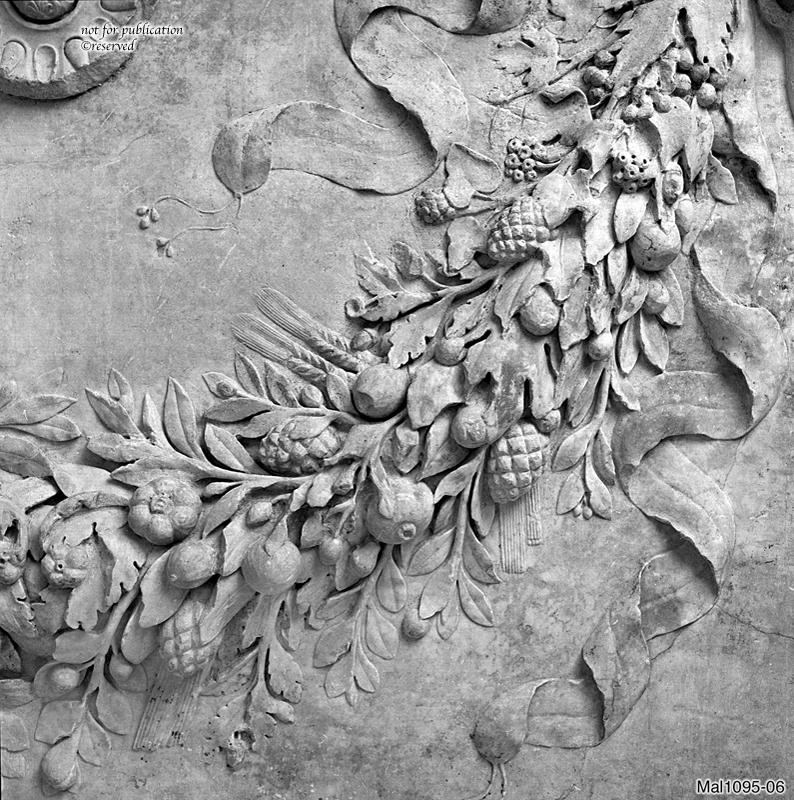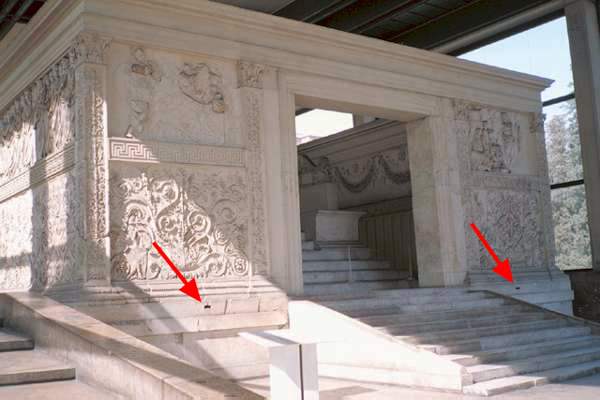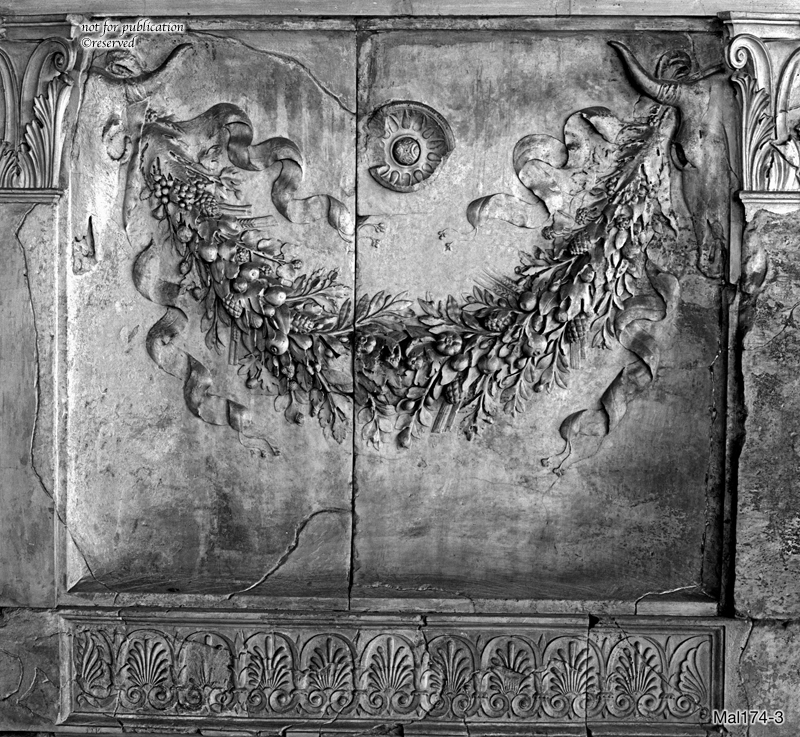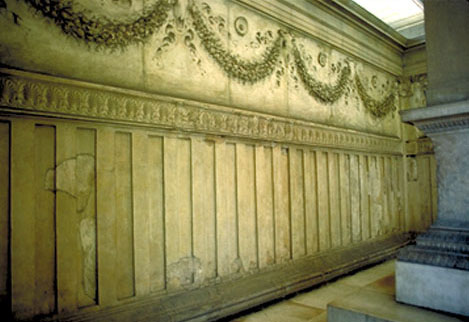The Entrances and Interior of the Ara Pacis
The interior reliefs of the altar focus on the Ara Pacis's use as a functional altar, and has straight forward images and symbolism. The inside has a large repeating relief of festoons with vessels and bucrania (ox skulls). The bulls and bowls hint towards the piety of Augustus in his role as chief priest, with the ox skulls literal reminders of the sacrifices that would take place at the altar. The garlands (mostly acanthus) contain fruit from all seasons, reminding the viewer that the peace of Augustus lasts year round. This reinforces the image of a permanent peace, contrasting with the transience of the seasons and their flora. Reliefs mounting the altar itself show a procession of priests and a bull on their way to a sacrifice it at (presumably) the Ara Pacis.
A detail of the bucrania and garlands.
The Altar was open to the outside air, a common feature of many altars and houses at the time.
Also notice the small notches, designed to allow blood to flow out of the Altar and facilitate cleaning. Although the altar was designed to further the ideals that Augustus wished to disseminate, it was designed and used as a functioning altar.
Detail view of the Acanthus garlands containing fruits from all the seasons.
Notice the imitated wooden paneling that wraps around the lower half of the interior walls. This feature was presumably added to make the altar look more like a modest temple to a minor deity.





